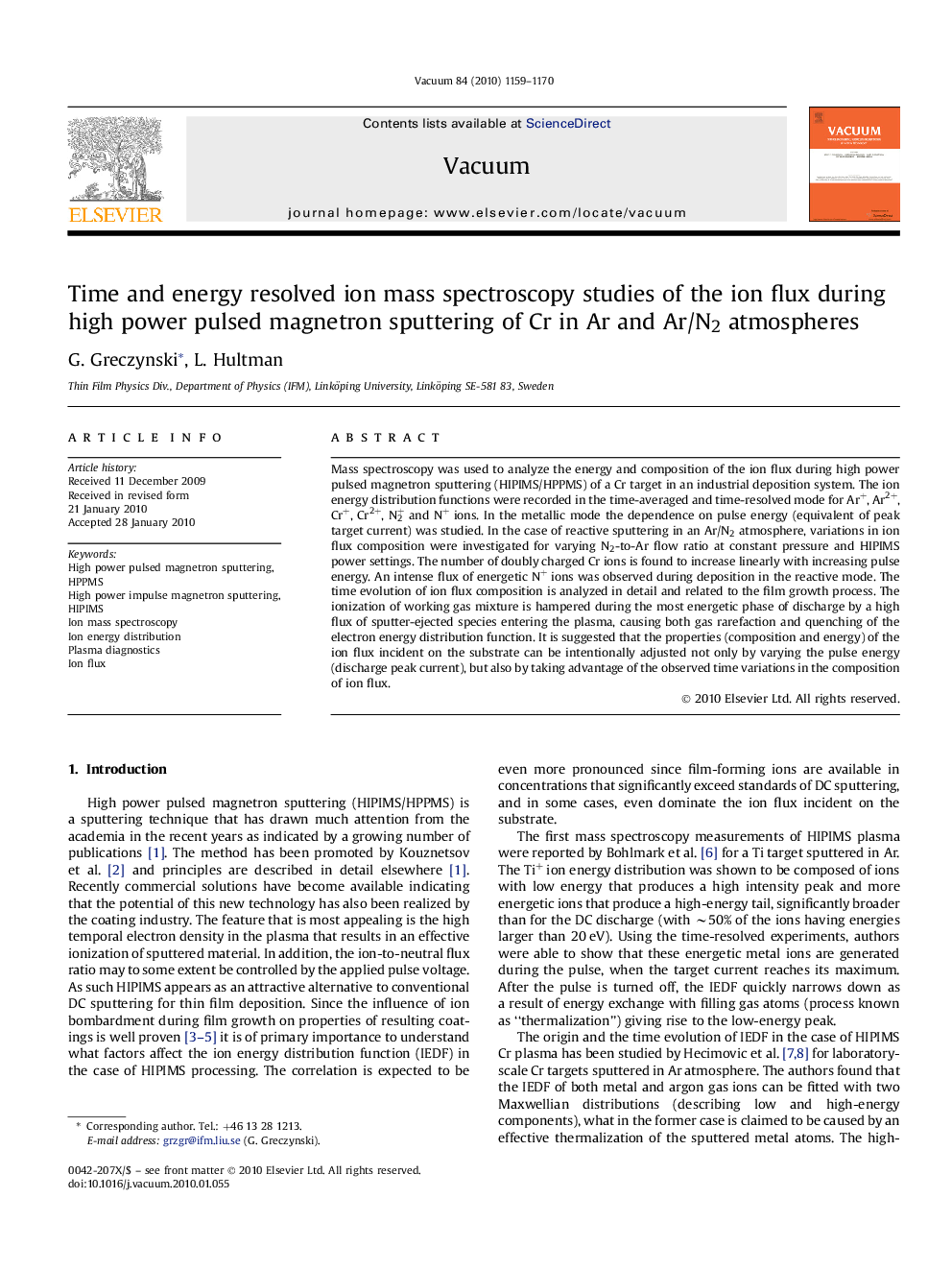| Article ID | Journal | Published Year | Pages | File Type |
|---|---|---|---|---|
| 1689071 | Vacuum | 2010 | 12 Pages |
Mass spectroscopy was used to analyze the energy and composition of the ion flux during high power pulsed magnetron sputtering (HIPIMS/HPPMS) of a Cr target in an industrial deposition system. The ion energy distribution functions were recorded in the time-averaged and time-resolved mode for Ar+, Ar2+, Cr+, Cr2+, N2+ and N+ ions. In the metallic mode the dependence on pulse energy (equivalent of peak target current) was studied. In the case of reactive sputtering in an Ar/N2 atmosphere, variations in ion flux composition were investigated for varying N2-to-Ar flow ratio at constant pressure and HIPIMS power settings. The number of doubly charged Cr ions is found to increase linearly with increasing pulse energy. An intense flux of energetic N+ ions was observed during deposition in the reactive mode. The time evolution of ion flux composition is analyzed in detail and related to the film growth process. The ionization of working gas mixture is hampered during the most energetic phase of discharge by a high flux of sputter-ejected species entering the plasma, causing both gas rarefaction and quenching of the electron energy distribution function. It is suggested that the properties (composition and energy) of the ion flux incident on the substrate can be intentionally adjusted not only by varying the pulse energy (discharge peak current), but also by taking advantage of the observed time variations in the composition of ion flux.
